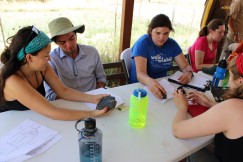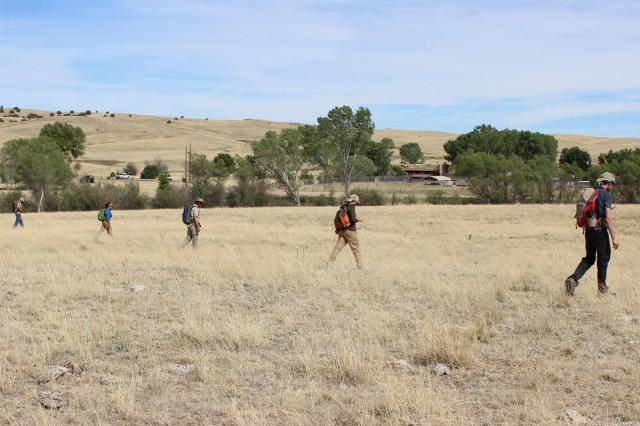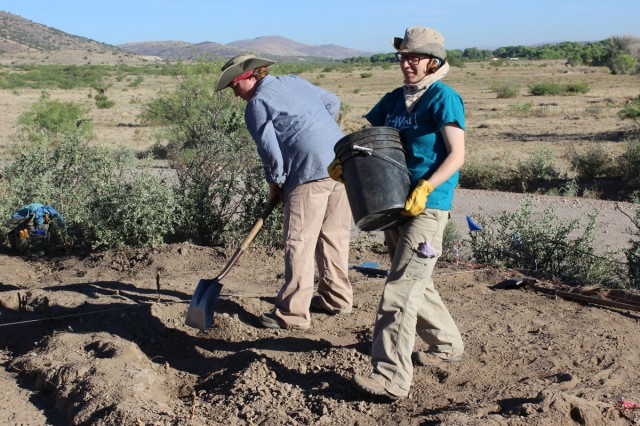- Home
- >
- Preservation Archaeology Blog
- >
- Teaching and Research at the 2014 Preservation Arc...


Our 2014 Preservation Archaeology Field School in the Upper Gila area has just begun, and we are off to a great start. Over the coming weeks, our students and staff will be writing blog posts summarizing some of our research and their learning experiences here in Mule Creek, New Mexico.
Our field school has several goals, including education, research, and public outreach. One of our primary goals is to train students. Archaeology Southwest and the University of Arizona have joined forces to offer the field school as a 7-credit archaeological field and laboratory methods class, and we have 14 students from all over the country this season. During the course, they will work on excavation, survey, laboratory analysis, and experimental archaeology. Their assignments include writing professional summaries of our excavation units, and preparing and presenting an original research project to the local community at our public “Archaeology Fair” at the end of the field season. As members of our team, students will recover artifacts in the field, classify them in the lab, analyze the data they collected, and interpret the results both for a professional audience and for the public. It’s a lot to do in six weeks, but it will be an experience they will never forget!

Fieldwork can be exhausting, so our staff members work hard to make sure students understand how their physical and mental labor is contributing to the project’s research goals. One of those goals is to better understand the Dinwiddie site, particularly how its residents were linked to people in other Salado communities in the region. Archaeology Southwest began excavating at this site during last year’s field school, when work focused on trash deposits found outside the pueblo rooms. This year, we are working inside a group of rooms at risk from erosion and disturbance from a nearby road. The students have only been excavating for two days, but we have already noted important differences from last year’s outdoor deposits.

Just this morning, we found an unusual pottery type that makes us reevaluate what we thought we knew about where the residents of the Dinwiddie site came from and when they arrived here. The Archaeology Southwest staff were, of course, nerdily excited by these new results. More importantly, so were the students, who recognized this pottery type and its importance immediately. They were able to apply information they learned in lectures and museum tours just a few days ago to an artifact they excavated in the field, and recognize what it meant in the context of our excavation site and its broader implications for our ideas about how people moved through the Southwest centuries ago. I can’t imagine a better way to learn archaeology. Judging by the laughter I can hear coming from the camp fire pit as I sit writing this post, our students like it too.

3 thoughts on “Teaching and Research at the 2014 Preservation Archaeology Field School”
Comments are closed.
Explore the News
-
Join Today
Keep up with the latest discoveries in southwestern archaeology. Join today, and receive Archaeology Southwest Magazine, among other member benefits.
When and where will the Mule Creek public Archaeology Fair be held at the end of the field season? Is the Mule Creek site available to local visitors?
thanks, sj
Hi, Suzanne, We just finalized details on the fair: https://www.archaeologysouthwest.org/event/archaeology-fair/. Everyone is welcome and there will be an opportunity to tour the site.
I am certain that the students know how fortunate they are to have this experience. I am a senior citizen and would have loved to do what they are doing when I was younger. I will follow their progress and try to enjoy their exciting discoveries from afar.